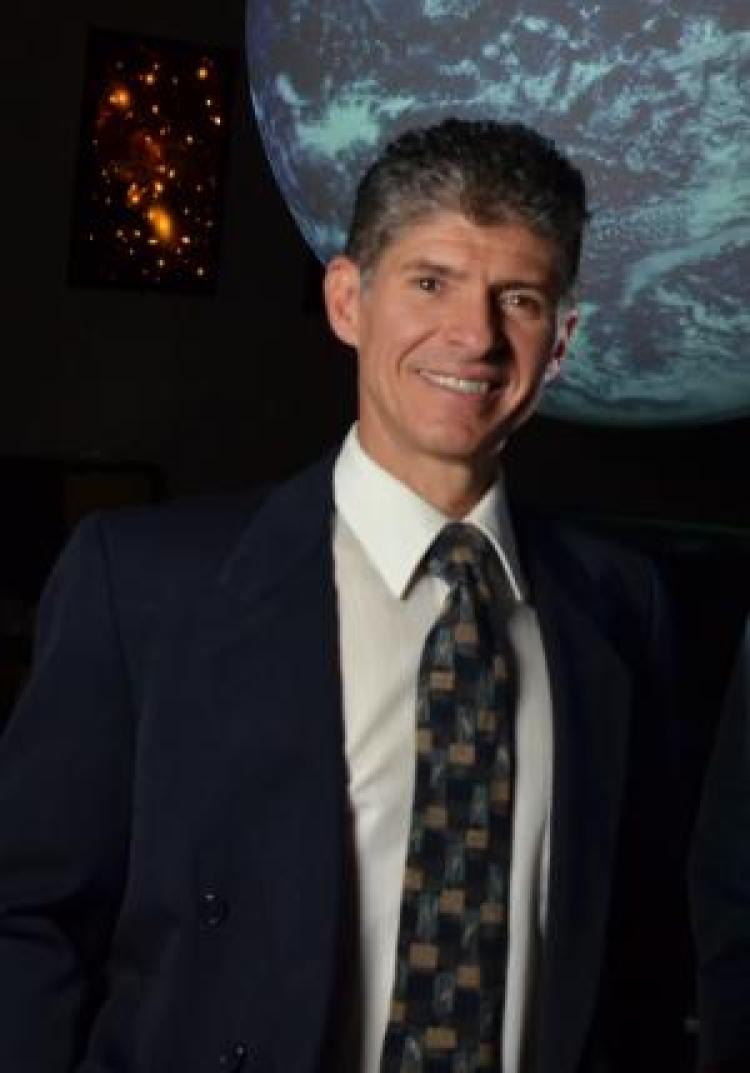A beginner’s guide to stargazing in Colorado
With the annual Perseid meteor shower quickly approaching, Fiske Planetarium’s Francisco “Tito” Salas took some time to speak with CU Boulder Today about stargazing, including providing tips for beginners and giving his Perseid meteor shower viewing outlook.

Fiske Planetarium Operations Manager Francisco “Tito” Salas
Stargazing 101
My best advice to anyone who is interested in stargazing is to get out of the city lights. We are lucky to have places like Nederland pretty close by. That is one of my favorite places because I can get there in half an hour, and get a true night sky.
The second thing is to bring a blanket, because the key is to lay on your back so you can look up at the sky. I also recommend bringing a small pair of binoculars, because you can aim them at the Milky Way, where you can see things like small globular clusters, things you can't see in the city due to the lights. Also, let your eyes adapt to the darkness for 15 to 20 minutes.
During the school year, students can also come to Fiske Planetarium on Thursday nights for a free show where they can see the night sky inside the dome, and then they can transfer that knowledge to the real night sky. Students and the public can also come to the Sommers-Bausch Observatory on Friday nights where they can use the observatory's large telescopes for night sky viewing.
What to look for
Satellites orbiting Earth. About two or three hours after sunset you can start seeing the tracks of satellites. And that's really unique, because you can tell it's not a star––stars don’t move like that––or a plane, which usually show multiple light sources. You can see them all over the night sky if you wait long enough.
An important thing to know is they are only visible two to three hours after sunset or before sunrise. People might think satellites are out in space, but they are actually pretty close to Earth, with most of them being 200 to 300 miles away. So you can only see them if the sun is shining light on them. After three hours or so you won't be able to see them; they'll be shaded.
The Perseid meteor shower
This is one of my favorite stargazing events. The meteor shower is caused by the Earth passing through the tail of the Swift-Tuttle Comet. When the Earth passes through comet's debris field, we see meteors, which are really particles of dust or larger chunks of debris burning up.
A good analogy is if you are driving in a snowstorm, your car is the Earth and the snowflakes are the debris from the comet. So you are just slamming into the snowflakes. During the Perseid meteor shower, we are just slamming into the old tail of a comet.
This year’s Perseid meteor shower will peak Aug. 11–13.
Stargazing tools
- Binoculars
- Blanket
- Sky and Telescope Interactive Sky Chart
Getting involved at CU Boulder
Perseid meteor shower outlook and viewing tips
2021 outlook: This year, viewers can expect about 50 meteors per hour. The good thing about this year's Perseids is there will be no issues with the moon. It's going to be past a new moon, and setting right after the sun sets, so the sky should be nice and dark.
Viewing tips: If you can't get out of the city, the most important thing is you have to wait until at least past midnight, because you have to wait for the constellation of Persues to be visible. If you wait until 3 or 4 in the morning, the constellation will be high enough in the sky that you won't have to worry about city lights.
When you go outside, you will want to look to the northeast, which is where most of the meteors will be. They may be coming from all over the sky, but most of them will be coming from that particular area. Remember, the meteors will appear in the northeast, so try to find a view that is open to the northeast for best viewing.
The Leonids meteor shower Nov. 16–17
This year's next big meteor shower is the Leonids, which usually produces 10–15 meteors per hour. Once again, the best time to view is past midnight. The expected peak is from late night Nov. 16 until dawn Nov. 17.
About Tito
Salas, operations manager for the planetarium, has spent 26 years at the planetarium where he began working as a CU student. Tito has been interested in astronomy and stargazing since he was a child. Now, he gets to share that passion and knowledge with all Fiske Planetarium visitors.


